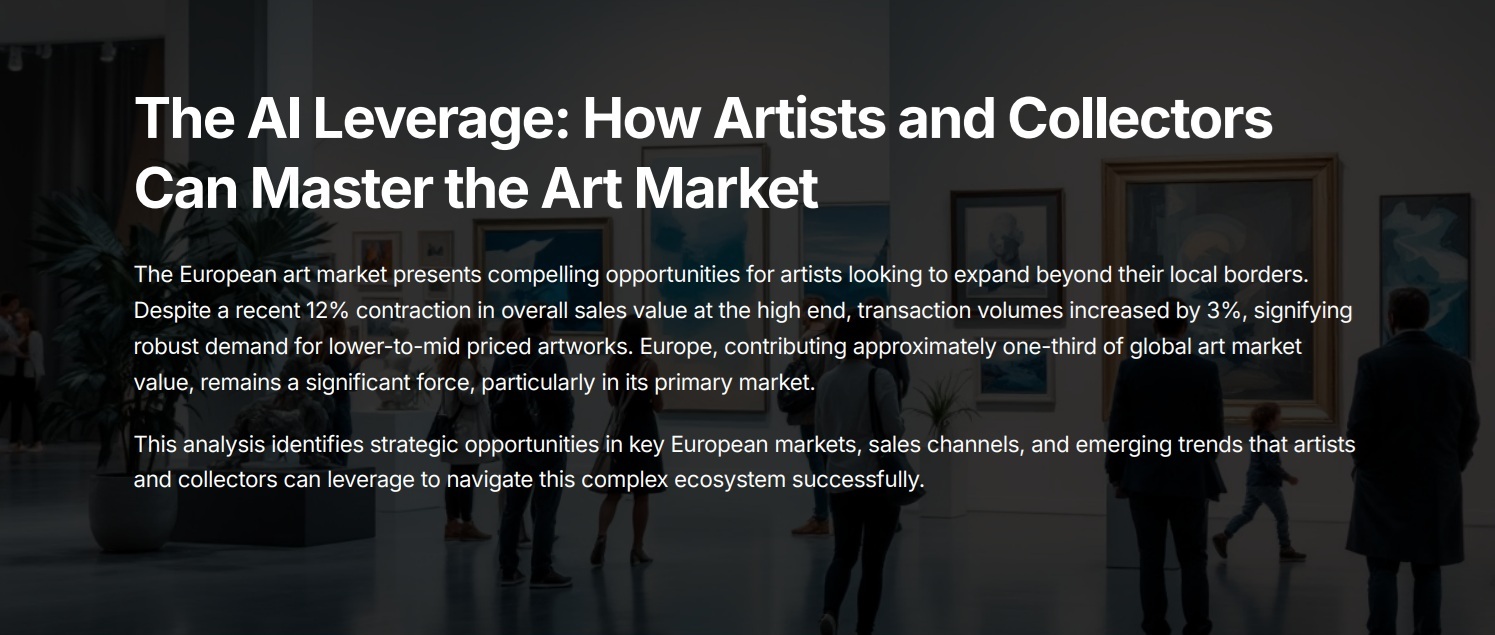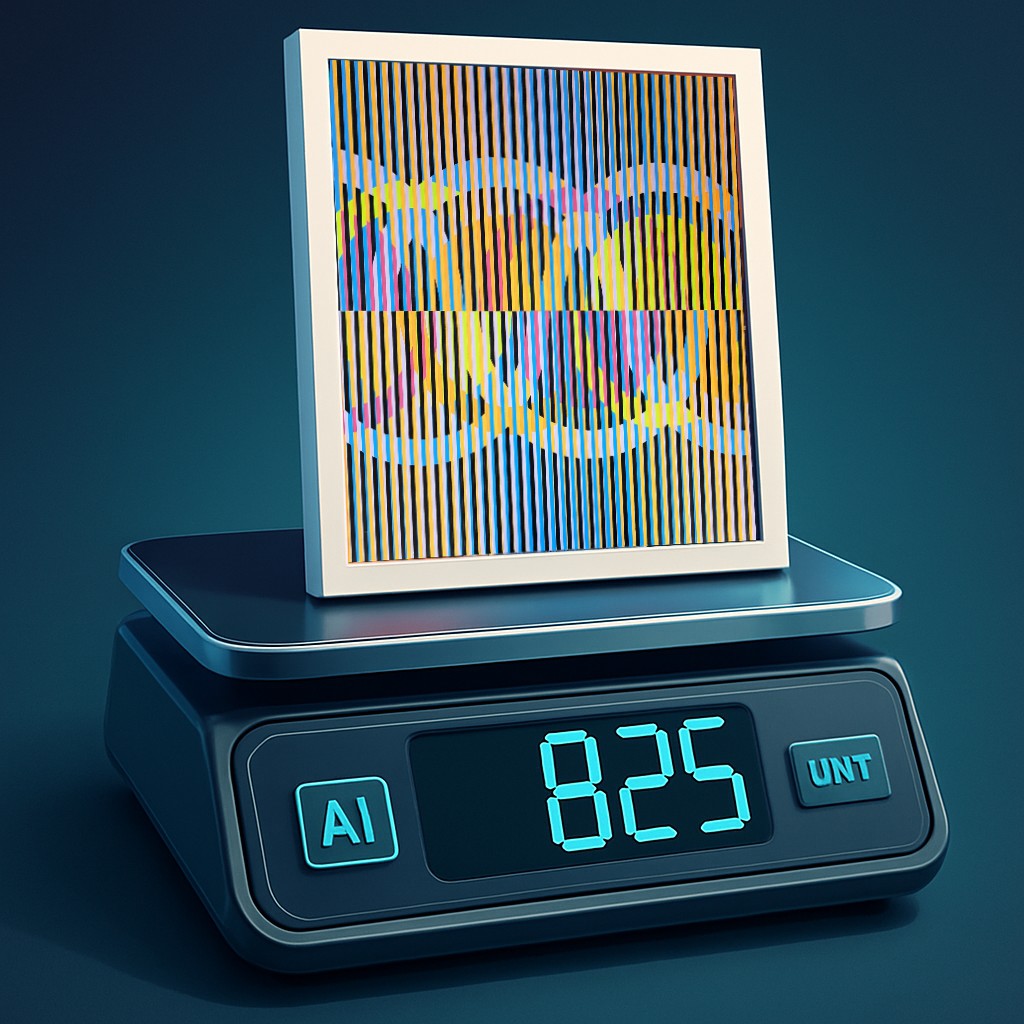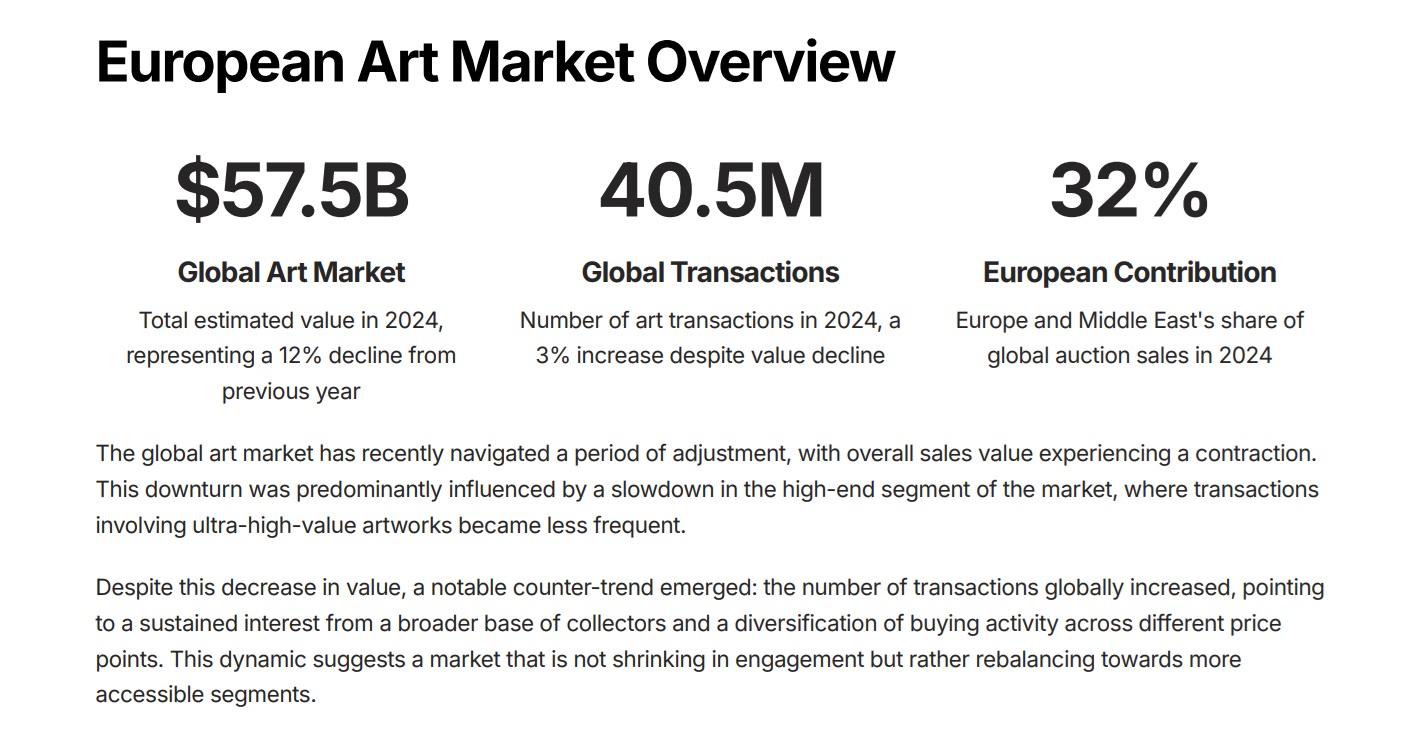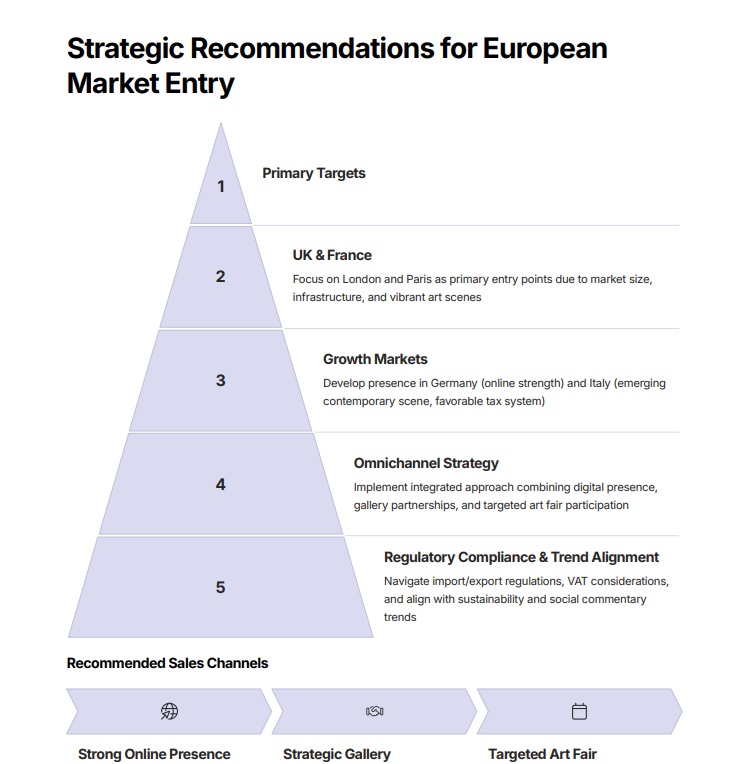How Artists and Collectors can use AI Tools to shape a smarter art business strategy
In today’s art world, artists wear many hats: we create, promote, negotiate, and build relationships — often all at once. The challenge? We rarely have the same resources as big galleries or institutions to do deep market research or hire a dedicated strategist.

Why I Used AI for a Market Research Project?
• Where the best opportunities are (the UK, France, Germany, and Italy — each with unique strengths for emerging artists)
• How the ultra-high-end art segment is slowing, but mid-range and affordable works are thriving.
• What buyers care about most now — sustainability, authentic storytelling, and cultural relevance.
• Which fairs, channels, and online platforms best match my price points and audience
This kind of market research would normally take weeks and cost thousands. Instead, it cost me a few carefully written prompts and a few minutes of AI time.

How Artists Can Use AI to Their Advantage
Here’s how I see AI tools helping artists right now:
✅ 1. Instant Market Research
Ask AI for trends, fairs, pricing data, collector profiles — and refine your questions until you have real, actionable insights.
✅ 2. Smarter Sales Channels
The report showed that online marketplaces thrive for artworks under $50,000, while fairs and galleries remain crucial for trust and bigger sales.
✅ 3. Early Trend Spotting
Collectors are ready to pay more for sustainable art — up to 25% extra. That insight alone can guide your choice of materials or how you frame your story.
✅ 4. Faster Content Creation
Press releases, grant applications, portfolio updates, even artist statements — AI can help you draft them, saving hours you can put back into the studio.

How Collectors Can Benefit Too
Collectors can use AI tools to:
• Discover and follow emerging artists
• Compare prices and provenance data
• Track shifts like digital art, sustainability, or niche movements
• Get quick summaries of auctions, fairs, and private sales opportunities
The result? A more transparent, connected market — and artists who stay ahead will benefit the most.
What This Means for the Art World
The European market data makes it clear:
• Collectors want depth and story, not just prestige.
• Sustainability is no longer optional.
• Mid-range price segments are expanding fast.
• Hybrid is the new normal: online discovery, offline trust.
• Artists now have research power that was once out of reach.
For artists like me, this means aligning our strategy with real data — not just gut feeling.
How This Research Was Compiled
This was my first time using Gemini for a complete market research project — and I was genuinely impressed by how quickly it brought everything together.
The insights and trends came from a comprehensive review of over 40 reputable sources, including:.
• Top Global Reports, like the Art Basel & UBS Global Art Market Report, TEFAF Art Market Report, and Artprice Report.
• Specialized Analyses, such as the Deloitte and ArtTactic Art & Finance Report and the British Art Market Federation.
• Industry Publications & Articles from trusted art news outlets, blogs, and cultural institutions.
• A direct look at my own brand’s website, Saatchi Art profile, and LinkedIn presence.
This multi-source approach helped me analyze market share, sales trends, collector behaviors, and regulatory updates — all tailored to my own goals.
Note: Like any AI research, these insights are a powerful starting point — but always verify numbers and details through primary sources when making major decisions.

My Takeaway
AI isn’t here to replace our creativity — it’s here to free us up to do more of it. It helps us ask better questions, make smarter moves, and connect with the right people in the right places.
And in an art market that keeps shifting, that’s priceless.

#AI #ArtBusiness #ContentMarketing #EuropeanArtMarket #EmergingArtists #Collectors #KineticArt